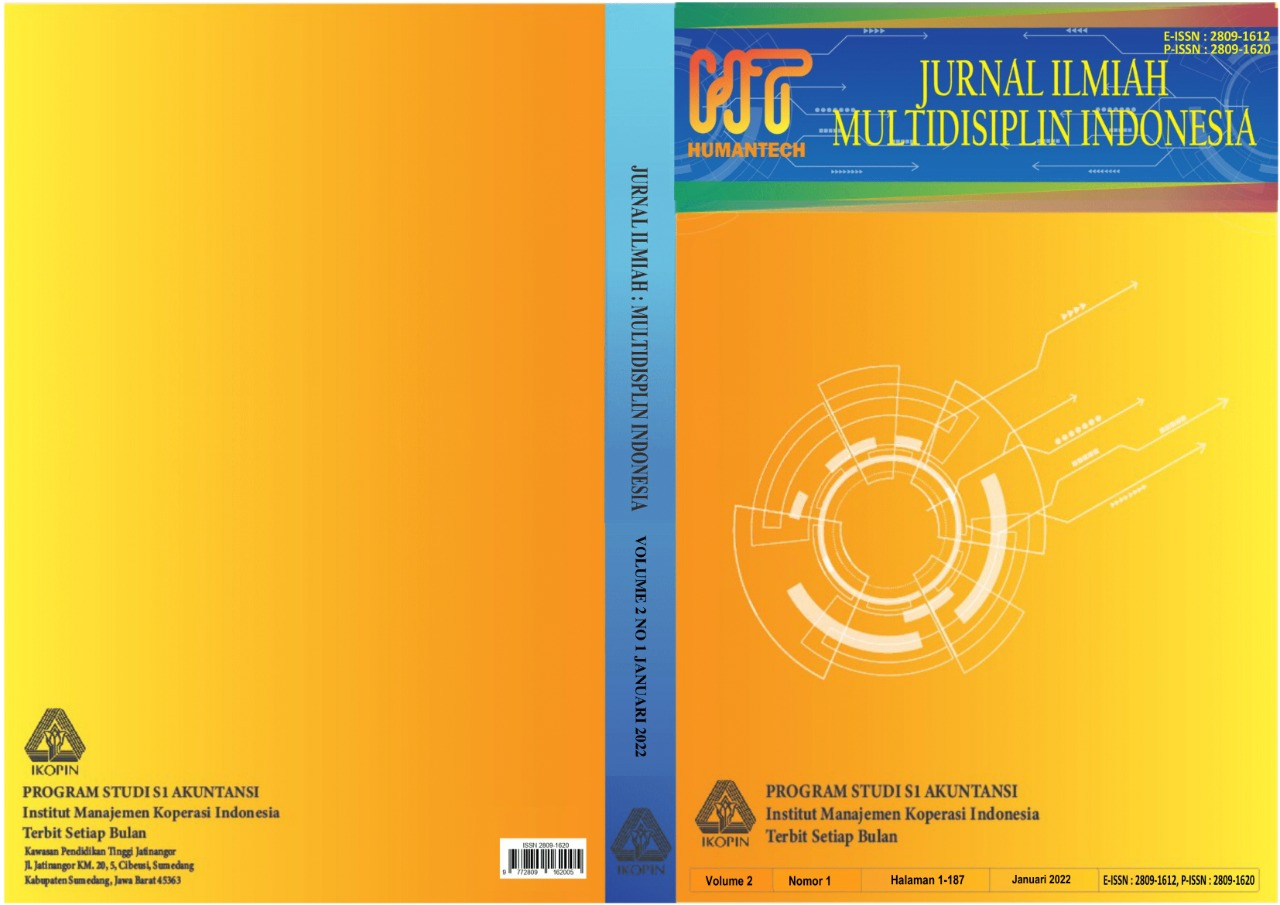Identifikasi senyawa bioaktif ekstrak metanol sereh wangi (cymbopogon nardus) dengan menggunakan gas chromatography-mass spectrometer
Main Article Content
Abstract
The need for essential oils is increasing along with the increasing development of
modern industries such as the perfume, cosmetic, pharmaceutical, food, aromatherapy
and drug industries (Ella et al, 2013). Citronella is processed and processed to obtain
pure essential oil so that it gets a high selling value, and research is carried out to
identify GC-MS using 100 grams of citronella extract with the extraction process using
500 ml of methol solvent and evaporated for 25 minutes at 60°C. The results of GC-MS
got the components from the highest to the lowest, namely the highest compound was
hydroxymethyl of 33.40% with a retention of 6,500 minutes, the second highest
compound was nonadecane of 29.47% with a retention of 23,559 minutes, the third
highest compound was dodecanoic of 14.51 with a retention of 22.863 minutes, the
fourth compound was pyran. of 13.31 with a retention of 5.333 minutes, and the lowest
compound is dodecanoic of 9.31 with a retention of 23,333 minutes. From the results of
the identification test of citronella extract using methanol as a solvent, the highest
compound component is the hydroxymethyl group, this compound has several functions,
namely, as an antioxidant and anti-microbial.
Article Details
References
Abdullah, T., & Boedisantoso, R. (2019). Perhitungan Ruang Terbuka Hijau Berdasarkan
Emisi Karbon Dioksida. Jurnal Pijar Mipa, 14(1), 95.
https://doi.org/10.29303/jpm.v14i1.997
Aisy, J. R. (2018). Kajian Penerapan Program Ganjil-Genap untuk Mengurangi Beban
Emisi Gas CO2, SO2, dan NO2 dari Sektor Transportasi di Kota Surabaya (Issue
. https://repository.its.ac.id/53185/
Analisa faktor–faktor yang mempengaruhi pemilihan moda transportasi penduduk kerja
di kecamatan sukmajaya depok menuju tempat kerja dengan menggunakan metode.
(n.d.). 1–18.
Anindhita, W., Arisanty, M., & Rahmawati, D. (2016). Prosiding Seminar Nasional
INDOCOMPAC ANALISIS PENERAPAN TEKNOLOGI KOMUNIKASI TEPAT
GUNA PADA BISNIS TRANSPORTASI OJEK ONLINE (Studi pada Bisnis Gojek
dan Grab Bike dalam Penggunaan Teknologi Komuniasi Tepat Guna untuk
Mengembangkan Bisnis Transportasi). 2, 712–729.
Badan Lingkungan Hidup Pemerintah Surabaya. (2016). Laporan Akhir I nventarisasi
Em isi Gas Rum ah K aca ( GRK ). 81.
Bǎlan, M., & Vasile, V. (2013). Measures to reduce transportation greenhouse gas
emissions in Romania. Quality - Access to Success, 14(SUPPL. 1), 306–310.
Bayu, D., Dharmowijoyo, E., & Tamin, O. Z. (2010). Pemilihan metode perhitungan
pengurangan emisi CO2 sektor transportasi. 10(3), 245–252.
Brander, M. (2012). Greenhouse Gases , CO2 , CO2e , and Carbon : What Do All These
Terms Mean? Ecometrica, August, 3.
Ellaway, A., Macintyre, S., Hiscock, R., & Kearns, A. (2003). In the driving seat:
Psychosocial benefits from private motor vehicle transport compared to public
transport. Transportation Research Part F: Traffic Psychology and Behaviour,
(3), 217–231. https://doi.org/10.1016/S1369-8478(03)00027-5
Eprilianto, D. F. (2015). Service Performance Indicator Sebagai Upaya Peningkatan
Kualitas Pelayanan Publik di Stasiun Lempuyangan Yogyakarta. Natapraja, 1(1),
–74. https://doi.org/10.21831/jnp.v1i1.3462
Fahrizal, M. S. (2016). Analisis pertumbuhan penggunaan pesawat terhadap beban emisi
karbon bandar udara internasional juanda.
Fuhaid, N. (2011). Pengaruh medan magnet terhadap konsumsi bahan bakar dan kinerja
motor bakar bensin jenis daihatsu hijet 1000. Proton, 3(2), 26–31.
Handriyono, R. E., & Kusuma, M. N. (n.d.). Estimasi beban emisi so 2 dan no. x, 19–24.
Hidup, K. L. (2014). Form pengendalian pencemaran udara.
Hiscock, R., Macintyre, S., Kearns, A., & Ellaway, A. (2002). Means of transport and
ontological security: Do cars provide psycho-social benefits to their users?
Transportation Research Part D: Transport and Environment, 7(2), 119–135.
https://doi.org/10.1016/S1361-9209(01)00015-3
Jaya, A. E. P., & Yuwono, Y. (2014). Aplikasi Sistem Informasi Geografis (Sig) Untuk
Sebaran Beban Emisi Co2 Berdasarkan Kepadatan Lalu Lintas Di Kota Surabaya
Bagian Selatan. Geoid, 9(2), 174. https://doi.org/10.12962/j24423998.v9i2.755
Kementerian Lingkungan Hidup dan Kehutanan Republik Indonesia. (2018). Baku Mutu
Emisi Bagi Usaha dan/atau Kegiatan Industri Pupuk dan Industri Amonium Nitrat.
–52.
Kementrian Lingkungan Hidup. (2010). Peraturan Menteri Negara Lingkungan Hidup
Nomor 12 Tahun 2010 Tentang Pelaksanaan Pengendalian Pencemaran Udara Di
Daerah. Pelaksaan Pengedalian Pencemaran Udara Di Daerah Menteri Negara
Lingkungan Hidup, 1–199. www.menlhk.go.id
Kusumawardani, D., & Navastara, A. M. (2018). Analisis Besaran Emisi Gas CO2
Kendaraan Bermotor Pada Kawasan Industri SIER Surabaya. Jurnal Teknik ITS,
(2), 2–6. https://doi.org/10.12962/j23373539.v6i2.24392
Kusumawardani, D., Navastara, M., Perencanaan, D., & Teknik, F. (2017). 24392-61095-
-Pb. 6(2).
Lintangrino, M. C. (2016). From Agricultural and Livestock.
Lintangrino, M. C., & Boedisantoso, R. (2016). Inventarisasi Emisi Gas Rumah Kaca
Pada Sektor Pertanian dan Peternakan di Kota Surabaya. Jurnal Teknik ITS, 5(2).
https://doi.org/10.12962/j23373539.v5i2.16528
Lopulalan, M. C. (2015). Determination of Specific Emission Factors for Estimating and
Mapping Carbon Footprint From Residentials and Solid Waste Sectors in Malang
District. 19–22.

